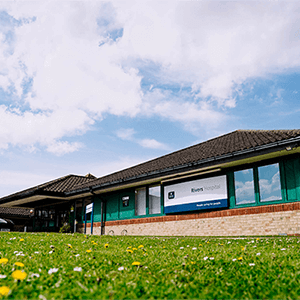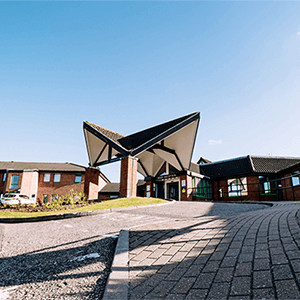
Search by region


Umbilical hernia repair child is a surgical procedure to repair an unusual bulge that can be seen or felt in your child’s belly button, called an umbilical hernia.
An umbilical hernia forms during pregnancy when the opening of a child’s umbilical cord does not close properly. Their abdominal lining and bowel can then bulge out through the opening in the abdominal wall muscle and form a lump.
Umbilical hernias do not need to be fixed. Usually, they do not cause pain in children.
You may choose for your child to have an umbilical hernia repair to prevent complications that may occur as a result of an umbilical hernia. These include obstruction where a section of your child’s bowel becomes stuck outside their abdomen and causes nausea, vomiting and pain, and strangulation where a section of the bowel becomes trapped and its blood supply is cut off. In childhood, umbilical hernias hardly ever cause these complications, but they are more likely to happen in adulthood.
Another reason for this surgery is that your child is unhappy with the appearance of their belly button.
Umbilical hernias usually close on their own without any intervention or treatment. If an umbilical hernia is still present by the time a child is four or five years old, an operation to repair it will usually be suggested.
If younger children have an episode of obstruction or strangulation or if the hernia is very large, surgical repair may be recommended.
Umbilical hernia repair child surgery is usually a short procedure taking around 30 minutes. It is performed under a general anaesthetic so your child will be asleep.
The surgeon makes a small cut at the bottom of the belly button, pushes the hernia sack back into its right place behind the muscle wall, and then closes any weak spots or gaps in your child's tummy muscles with stitches.
The costs to have an umbilical hernia repair child surgery will depend on your chosen specialist and your chosen Ramsay hospital.
You will receive a formal quotation price for your child’s surgery following a consultation with one of our expert hernia repair surgeons. This formal quote will be valid for 60 days.
Ramsay is recognised by all major medical insurers. Medical insurance policies usually cover this surgery. We advise you to obtain written authorisation from your insurance provider before your child’s procedure.
We have a number of finance options if you are paying for your child’s surgery yourself. These include interest-free finance that requires no deposit and allows you to make monthly instalments at 0% interest, a one-off All-inclusive Total Care payment with unlimited aftercare, and flexible pay-as-you-go.
Your child should be able to return home on the same day as their surgery. Sometimes very young children are watched overnight in hospital.
You should follow the post-operative advice given by your child’s surgeon.
They may have some bruising, swelling or tenderness in the operated area for about a week. This can usually be relieved with pain relief medication, such as paracetamol or ibuprofen.
Children are usually able to return to school and their regular activities within a week. They should refrain from strenuous exercise for six weeks.
Our experienced paediatric and general surgeons regularly carry out umbilical hernia repair surgery for children. They understand that parents may be anxious and they do their best to put you and your child at ease.
Our local hospitals offer you rapid and easy access to appointments and surgery to conveniently evaluate and treat your child’s umbilical hernia.
We have strict protocols in place to minimise your child’s risk of infection, including Covid 19, whilst at one of our Ramsay hospitals.


Clifton Park Hospital, in York, Part of Ramsay Health Care UK, has been shortlisted for the 2026 HSJ partnership award.
Ramsay Health Care UK are celebrating after being named as a Gold National Joint Registry (NJR) Quality Data Provider for the second year running, after successfully completing a national data quality audit programme for 25 hospitals offering orthopaedic procedures.
Duchy Hospital in Truro, proudly opened its state-of-the-art Imaging and Outpatient Suite representing a major investment in patient care, designed to enhance diagnostic capabilities and improve the overall experience for patients across Cornwall.
The information, including but not limited to, text, graphics, images and other material, contained on this website is for educational purposes only and not intended to be a substitute for medical advice, diagnosis or treatment. Always seek the advice of your physician or other qualified health care provider with any questions you may have regarding a medical condition or treatment.
No warranty or guarantee is made that the information contained on this website is complete or accurate in every respect. The testimonials, statements, and opinions presented on our website are applicable to the individuals depicted. Results will vary and may not be representative of the experience of others. Prior patient results are only provided as examples of what may be achievable. Individual results will vary and no guarantee is stated or implied by any photo use or any statement on this website.
Ramsay is a trusted provider of plastic or reconstructive surgery treatments as a part of our wrap-around holistic patient care. Our personal, friendly and professional team are here to support you throughout to ensure the best possible care. All procedures we perform are clinically justified.
*Acceptance is subject to status. Terms and conditions apply. Ramsay Health Care UK Operations Limited is authorised and regulated by the Financial Conduct authority under FRN 702886. Ramsay Healthcare UK Operations is acting as a credit broker to Chrysalis Finance Limited.
Ramsay Health Care UK is not currently recruiting for any roles based outside of England. If you are interested in applying for a role with Ramsay Health Care UK, please note that all available positions are advertised exclusively on our official website: https://www.ramsayhealth.co.uk/careers. Be cautious of individuals or organisations that approach you directly for remotely-based roles. Always verify the authenticity of the job offer and be careful with whom you share your personal information. For more information and advice on employment fraud, please visit: https://www.ramsayhealth.co.uk/careers/recruitment-fraud